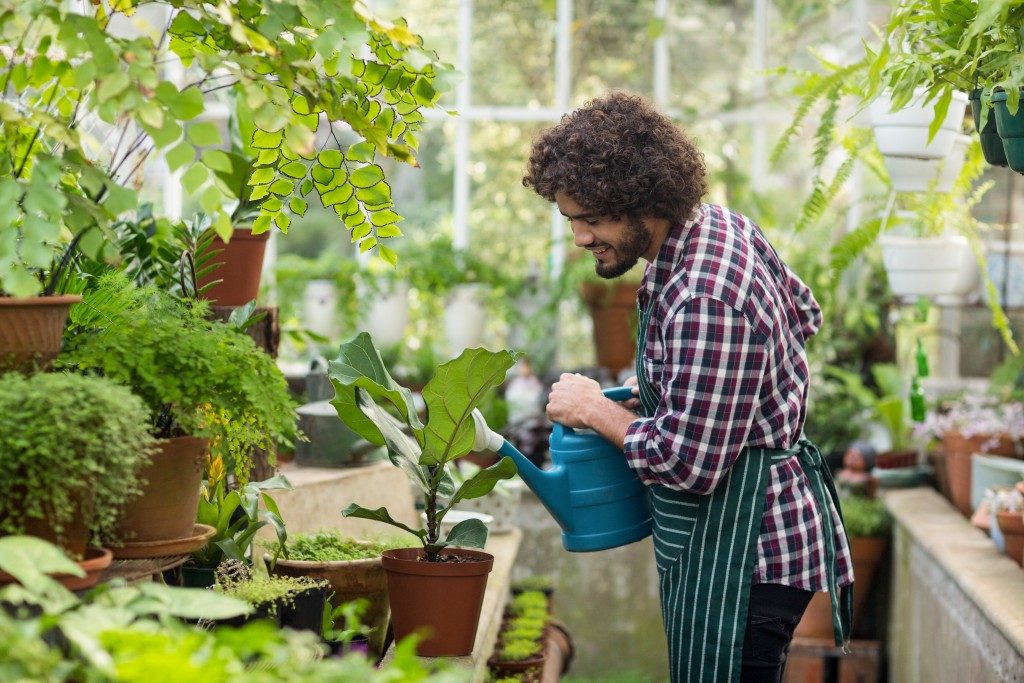A well-landscaped yard can add beauty, value, and curb appeal to your home. But keeping your landscaping looking its best can require some work. Here are some practical tips to help you care for your landscaped yard so you can enjoy it for years to come.
Water regularly
Depending on your climate, you’ll need to water anywhere from once a week to once a day. The best time to water is early morning before the sun gets too hot. This allows the water to penetrate deep into the roots, where it can do the most good. If you water in the evening, the water will sit on top of the grass and encourage fungus growth.
Consider xeriscaping
As water becomes increasingly scarce, it’s crucial to consider xeriscaping when planning your landscaping. Xeriscaping is a type of gardening that uses drought-tolerant plants to minimize the need for watering. Xeriscaping has many benefits, including reduced water usage, lower maintenance costs, and increased resistance to pests and diseases. In addition, xeriscaped gardens can be just as beautiful as traditional gardens, with a wide variety of plant life to choose from. If you live in an area with limited water resources, xeriscaping may be your best option.
Fertilize regularly
Any successful gardener knows that fertilizing regularly is key to having a healthy, lush lawn or garden. But what exactly does fertilizer do? In short, fertilizer provides essential nutrients that promote plant growth. For example, nitrogen helps plants to produce more chlorophyll, which gives leaves their green color. Phosphorus helps plants to develop strong roots, while potassium aids in water absorption and disease resistance. By applying fertilizer regularly, you can ensure that your plants are getting the nutrients they need to thrive.
Mow regularly

Keeping the grass in your yard trimmed is vital for its health and appearance. How often you need to mow will depend on the type of grass in your yard and the time of year. In general, most lawns need to be mowed at least once a week during the growing season. Not only does it remove dead and dying grass, but it also helps to promote new growth. However, there are a few things to remember when mowing the lawn. First, set the blade height correctly for the type of grass you are growing. Cutting the grass too short can damage the roots and make it more susceptible to disease. Second, mow in different directions each time to prevent the grass from leaning in one direction. Finally, clean the mower after each use to prevent the spread of disease.
Prune regularly
Pruning is an essential part of keeping your yard looking its best. Trimming dead or overgrown branches can encourage new growth and keep your plants healthy. It’s also an excellent way to control the shape of your plants and prevent them from getting too big. When pruning, be sure to use the correct tools for the job. Sharp, clean pruners will give you the best results and help to avoid damage to your plants. You should also be aware of the type of plant you’re pruning. Some plants require special pruning techniques, so it’s always a good idea to consult a gardening guide before you start.
Edge regularly
Edging around walkways, flower beds, and other areas of your yard help give it a clean, finished look. How often you need to frame will depend on how quickly things grow in your yard and how much attention to detail you want to maintain. Regular edging also sends a message to grass that it needs to stay put – which can help to prevent it from spreading into flower beds or other areas where it’s not wanted. Of course, edging takes a bit of time and effort, but the results are well worth it.
Weed regularly
Even the most well-manicured lawns and gardens can be subject to unwanted weed growth. Weeds not only detract from your property’s aesthetic but can also compete with your plants for resources like sunlight, water, and nutrients. Left unchecked, weeds can quickly take over your garden, smothering your plants and making it difficult to achieve the desired look. That’s why it’s essential to weed regularly, ideally every week. By staying on top of the problem, you can keep your yard looking neat and tidy while ensuring that your plants have the space and resources they need to thrive.
Final thoughts
Keeping a yard look its best takes time and effort, but the results are well worth it. By following these simple tips, you can ensure that your yard is healthy and attractive all season long. What hacks do you use to keep your yard looking its best?







